I’ve wanted to write about Sawtooth sunflower (Helianthus grosseserratus) since the earliest months of Bleeding Heartland’s wildflowers series in 2012. Large colonies thrive at the Neal Smith National Wildlife Refuge near Prairie City. But for one reason or another, I’ve never managed to catch them at the height of their blooming period.
After I visited the refuge in early August, I was determined to get back there a few weeks later to capture the sawtooth sunflowers. Again, life got in the way, and I feared these prairie plants had eluded me again.
The first weekend in October, I called the refuge and spoke with a volunteer, who assured me that some sawtooth sunflowers were still blooming near the main parking lot. I took most of the pictures enclosed below there or near the Highway 163 ramp that leads to the refuge (exit 18).
Sawtooth sunflower is native to most of the U.S. east of the Rocky Mountains.
These are among the tallest of the flowering plants on the tallgrass prairie. Supposedly, they can reach heights of 12 feet. But some grow much taller than that. Rick Hollis and Eric Miller gave me permission to publish this picture Rick took of Eric next to a ridiculously tall sawtooth sunflower at Kent Park (Johnson County) in August 2018.
In contrast, some sawtooth sunflowers are only two to three feet tall.
Sawtooth sunflowers tend to grow in large groups. When I pulled off the highway near the wildlife refuge, I was excited to find a colony next to the off-ramp.
I took this picture in that area. Behind the sawtooth sunflowers, you can see some stiff goldenrod that has gone to seed.
Lots of sunflowers with yellow ray florets and yellow central disks bloom in the late summer. How do you know you’ve found sawtooth sunflower? The Illinois Wildflowers and Minnesota Wildflowers websites have detailed descriptions of the plant’s features. As the common name suggests, the leaves tend to have toothed edges. The central stem is smooth and usually red.
Katie Byerly photographed some sawtooth sunflowers in Cerro Gordo County in August. The picture at the top of this post is one of hers. So is this shot of the red stem and leaves.
She also captured the overlapping bracts around the base of the flower heads.
In the next two shots, Katie got a closer look at some flower heads.
Back to my pictures. As I mentioned above, I worried October was too late to find any sawtooth sunflowers blooming. To my surprise, some plants had ray and disk florets just starting to appear.
Sometimes the same plant will have flowerheads in all stages–from opening to fully blooming to past their prime.
Most of the sawtooth sunflowers near the Neal Smith walking trails were finished, but as the volunteer promised, a large group were blooming next to the main parking lot.
Like some other tall prairie plants, sawtooth sunflowers occasionally appear to grow sideways.
A wide variety of insects visit the flowers or feed on the foliage. Bees and flies were all over the flowers on that autumn day.
Many of the flowerheads had lost most or all of their ray florets. As the fruit forms, the “center disk forms a head of dry seed.”

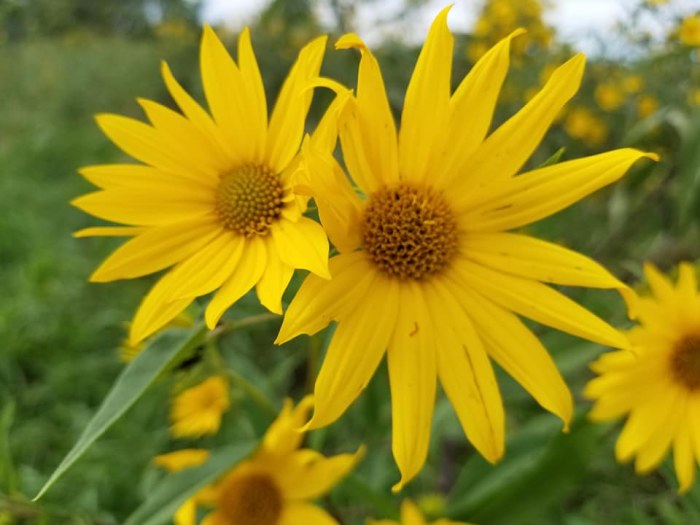
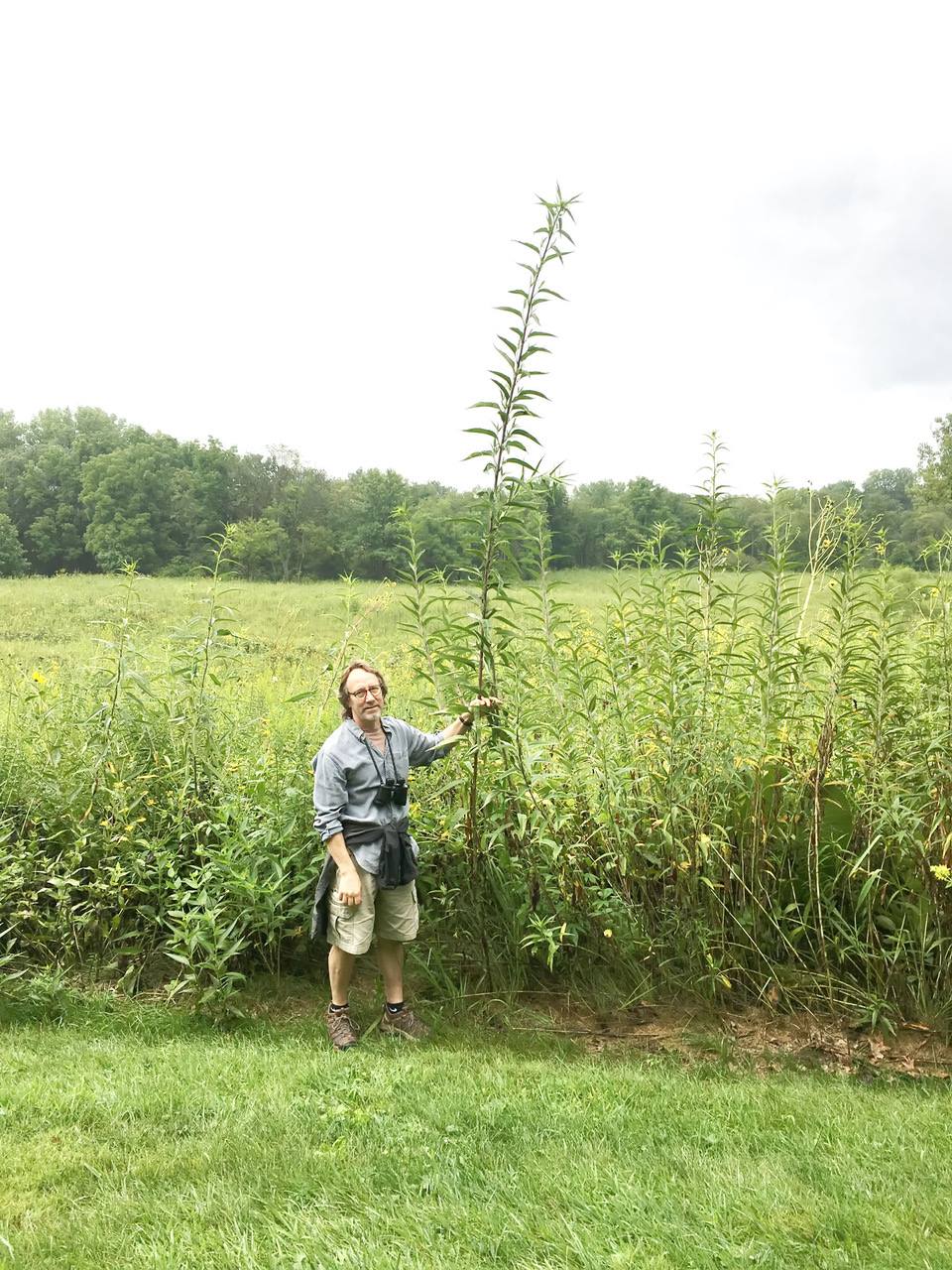
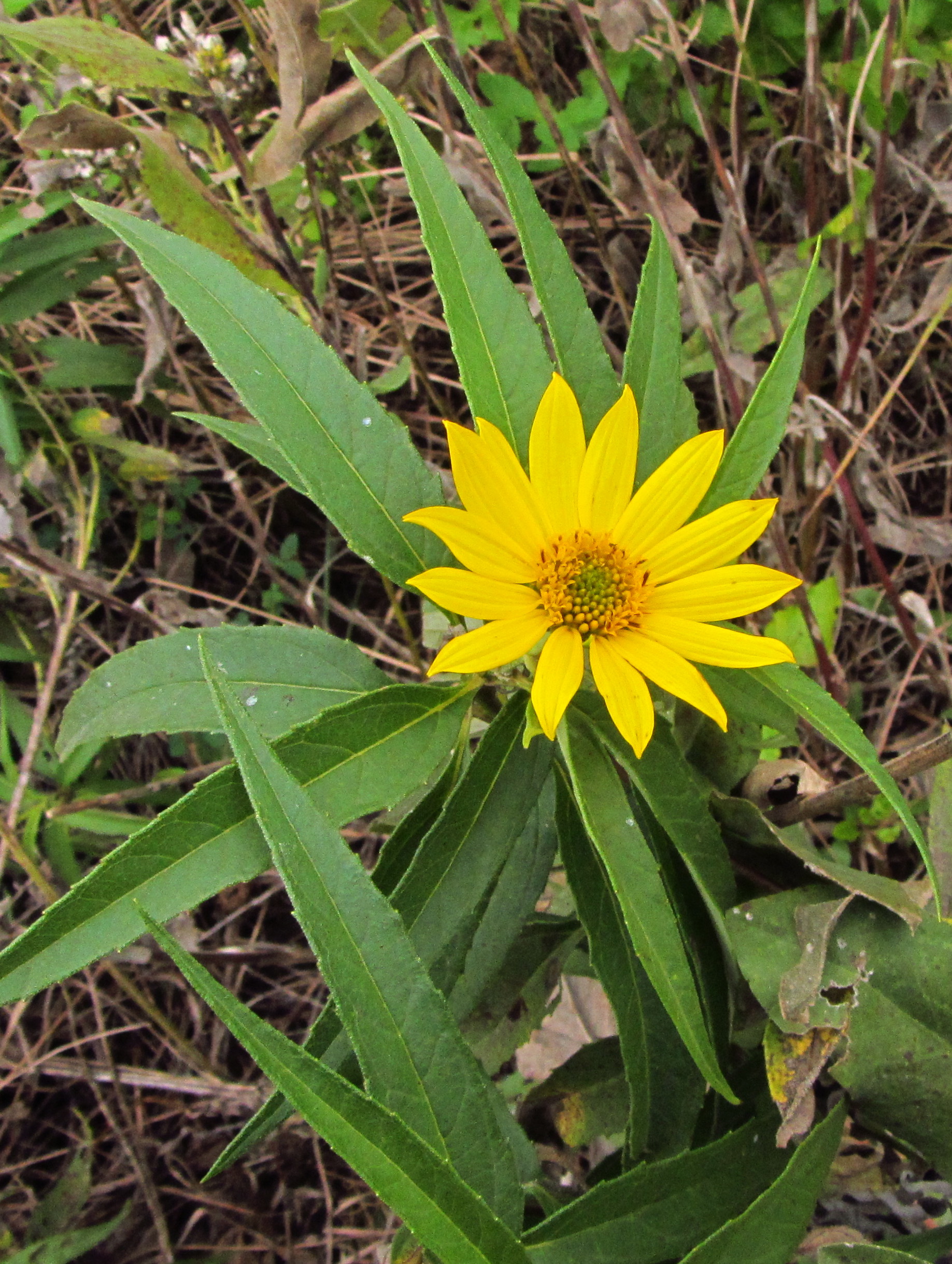
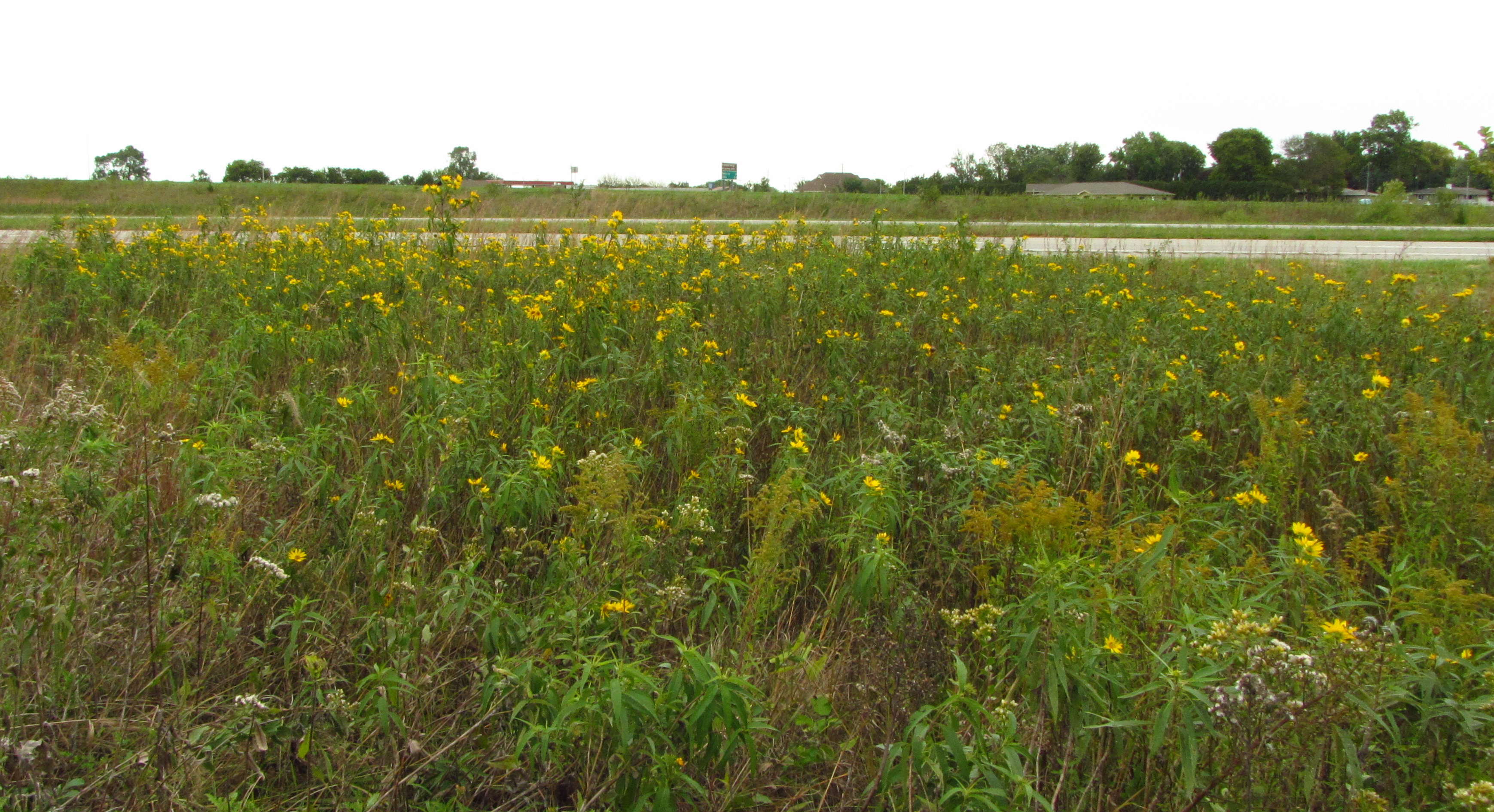
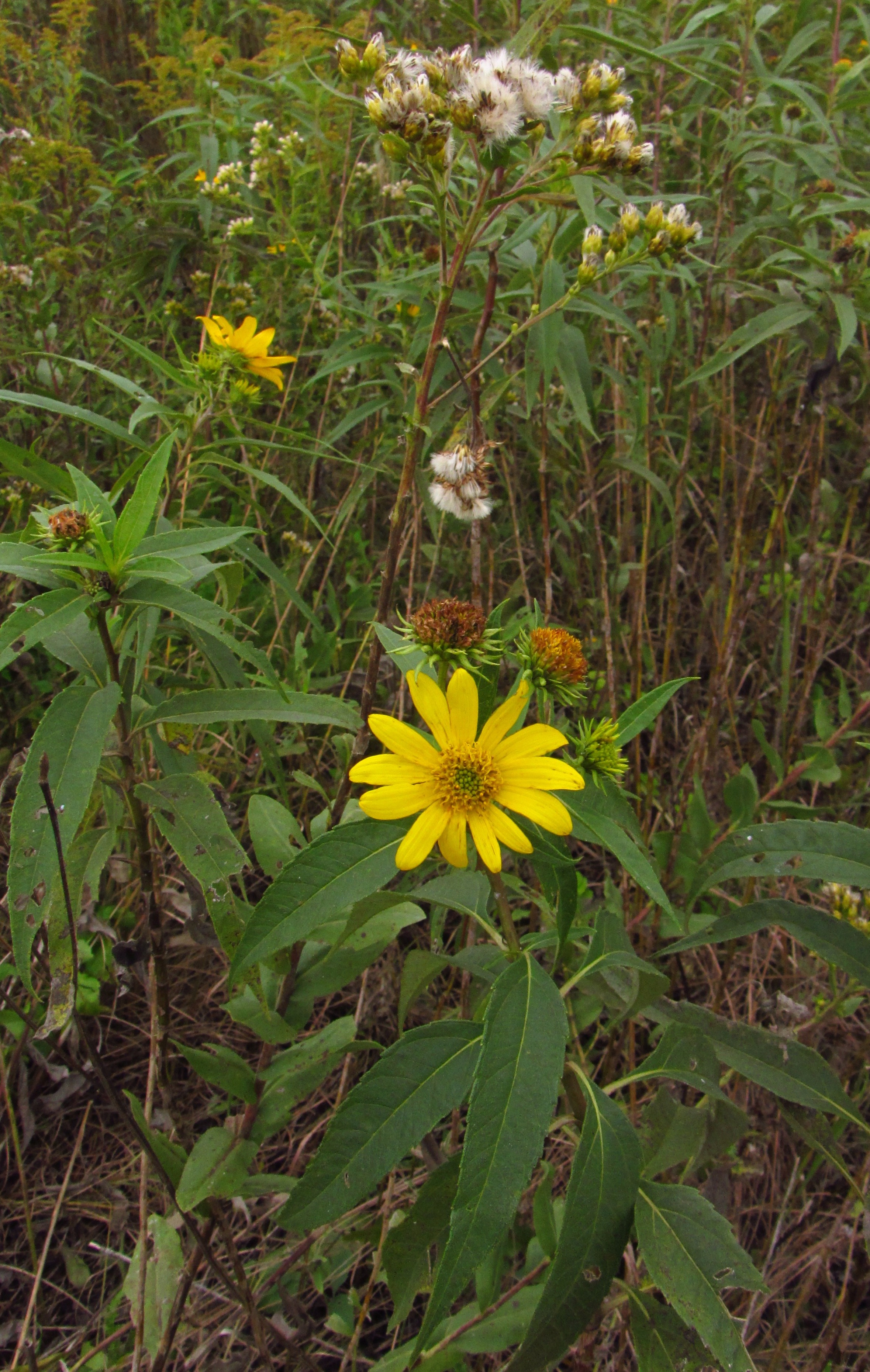
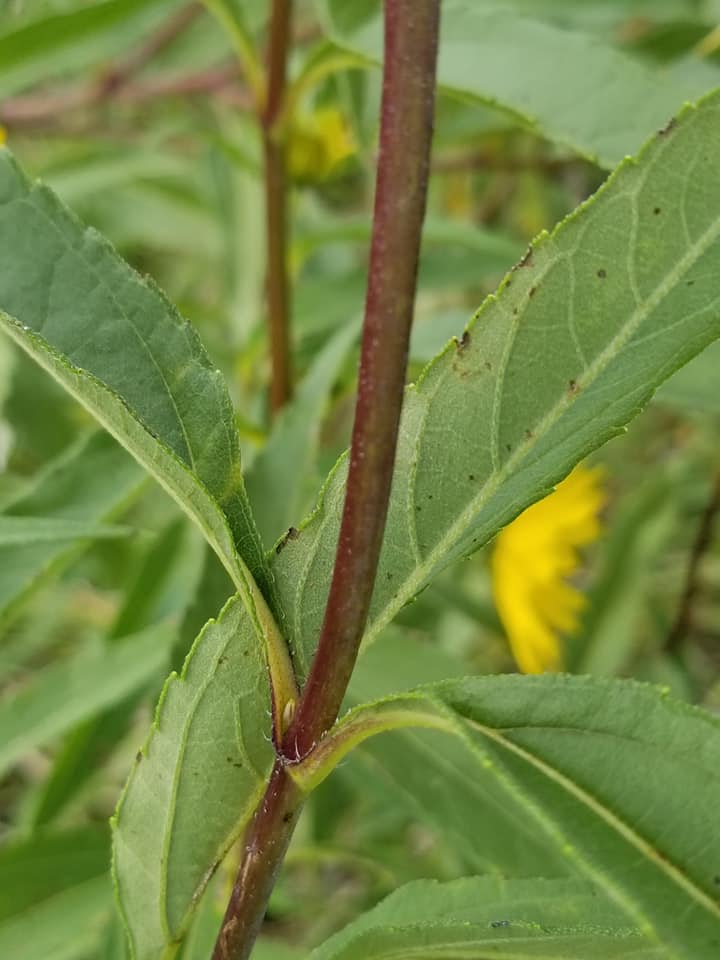
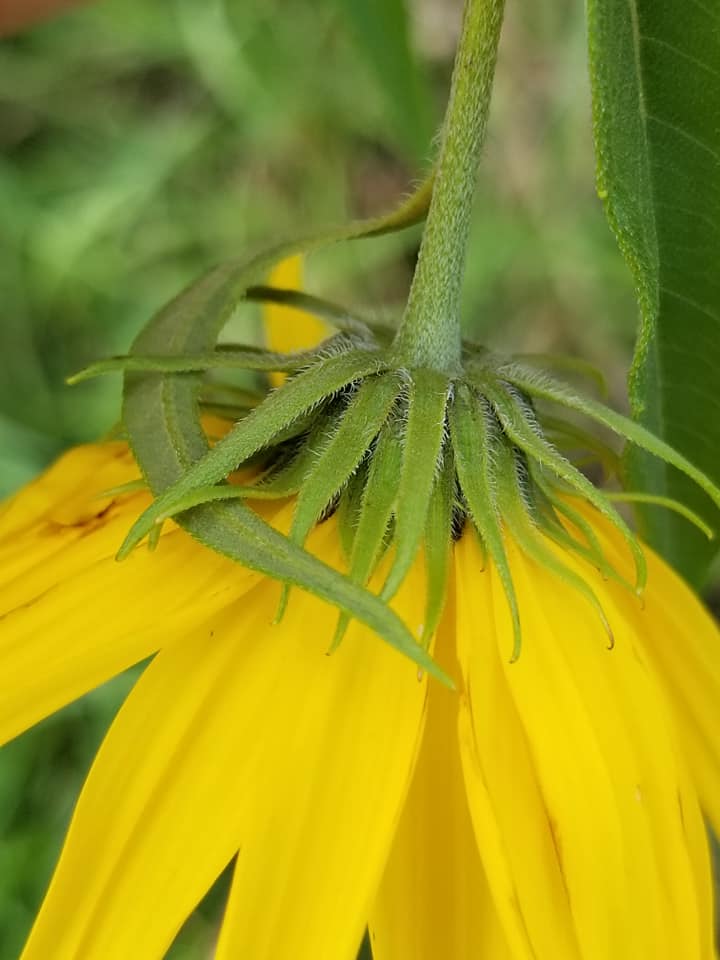
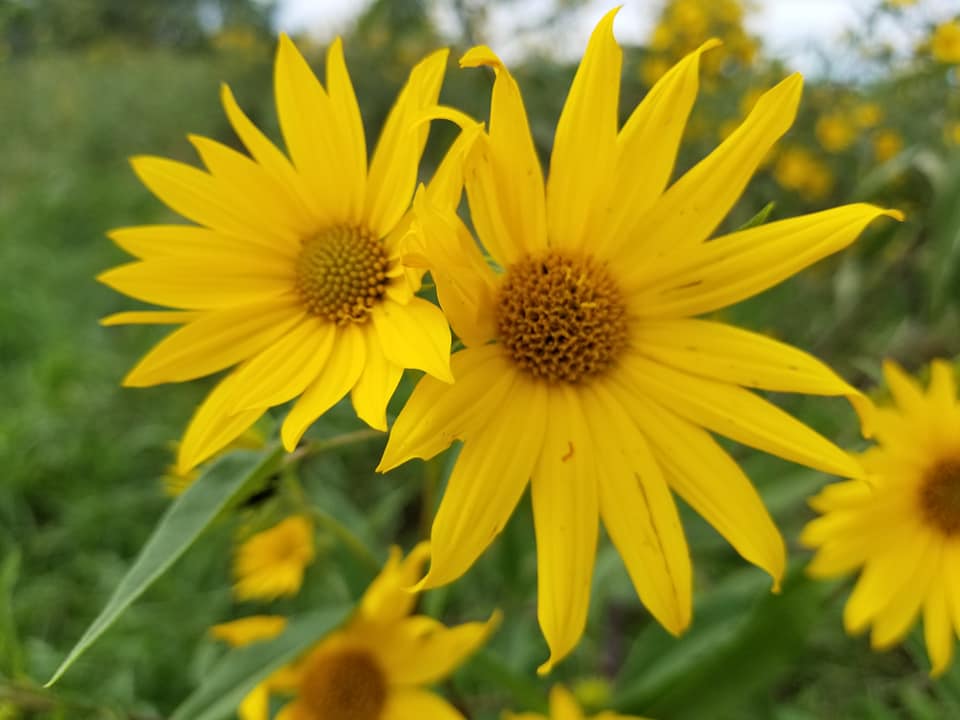
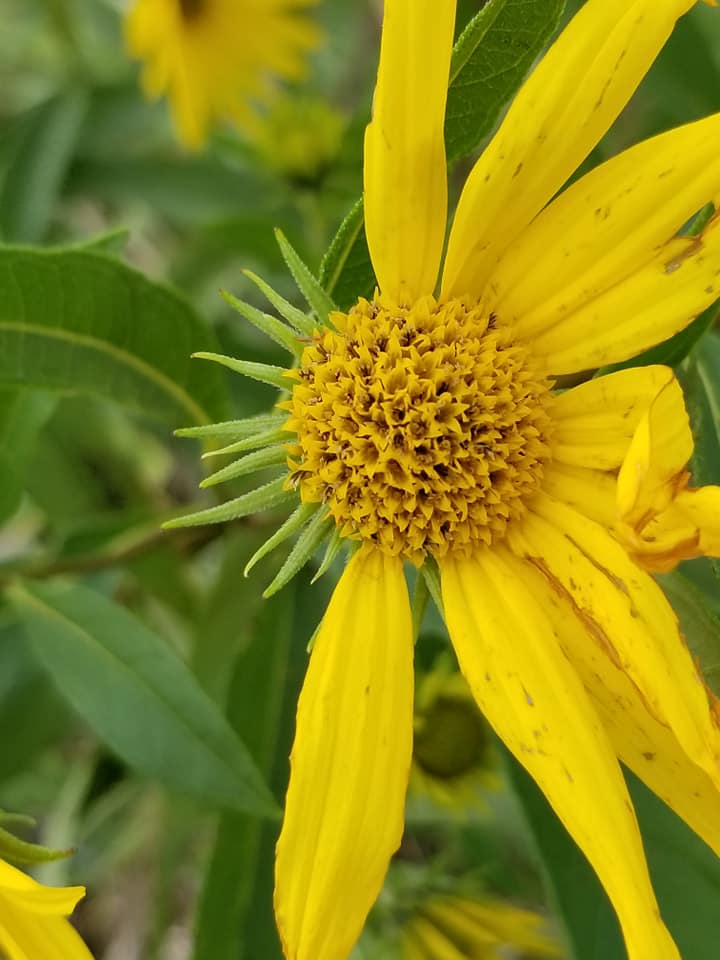
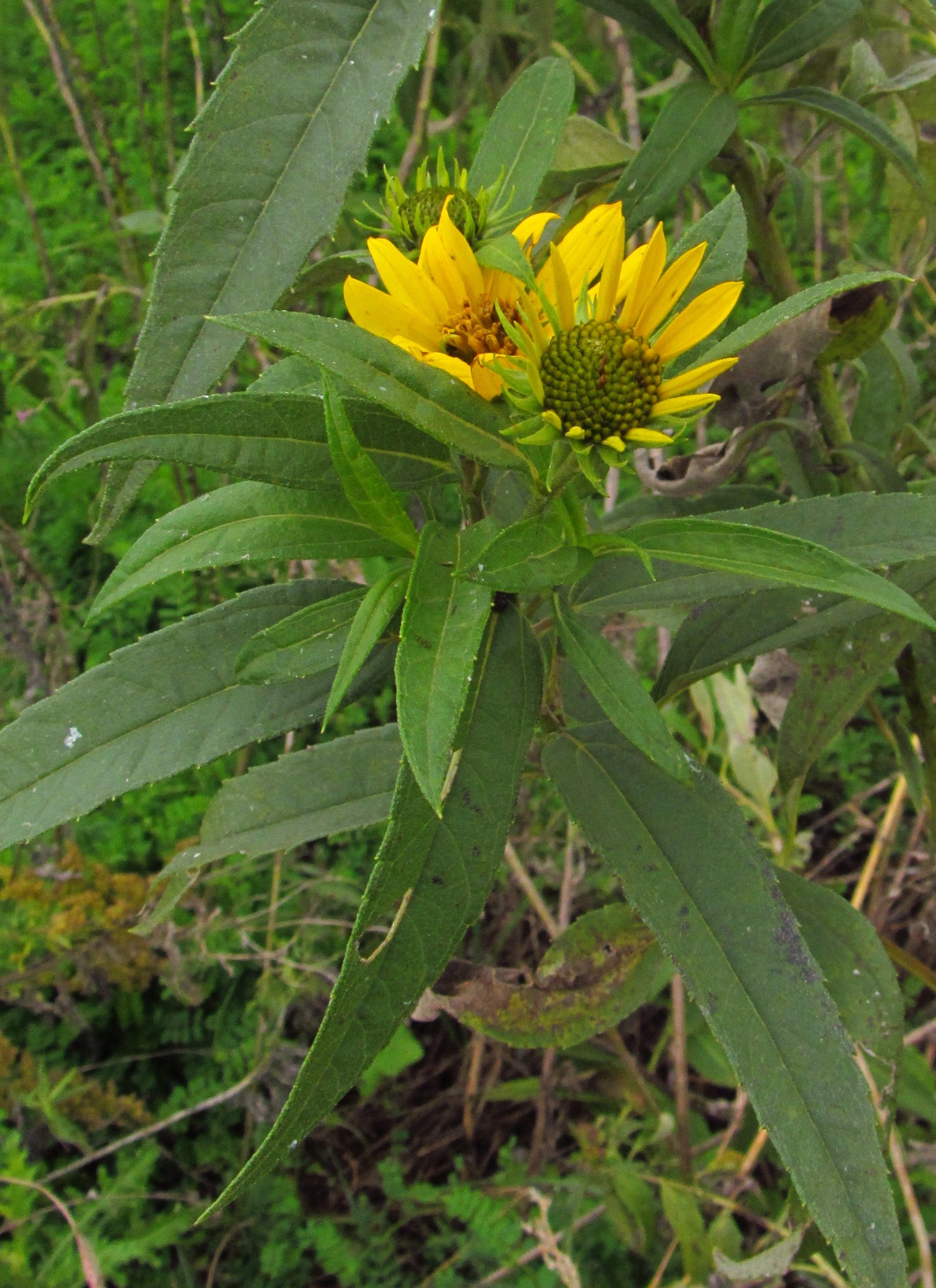
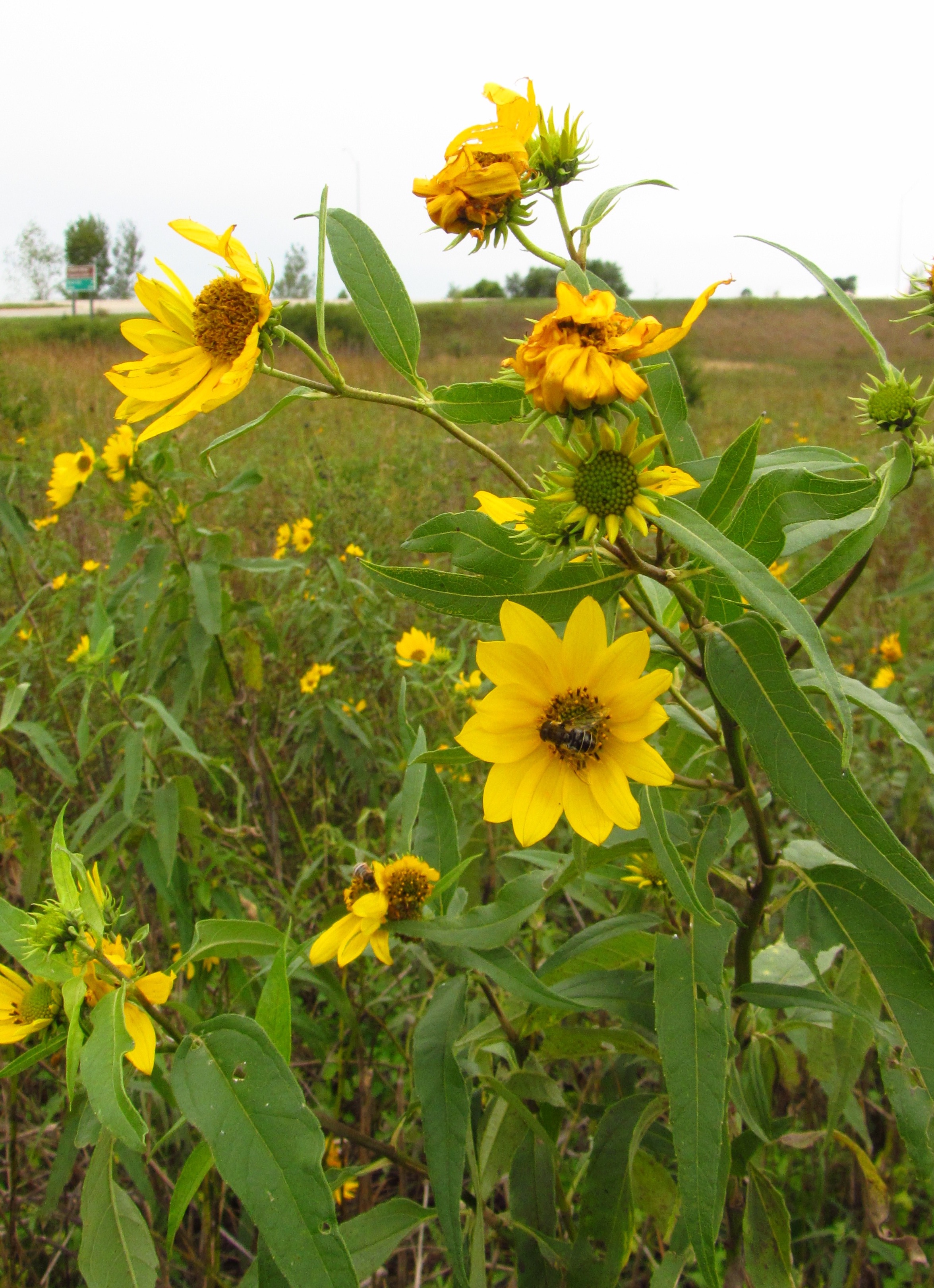
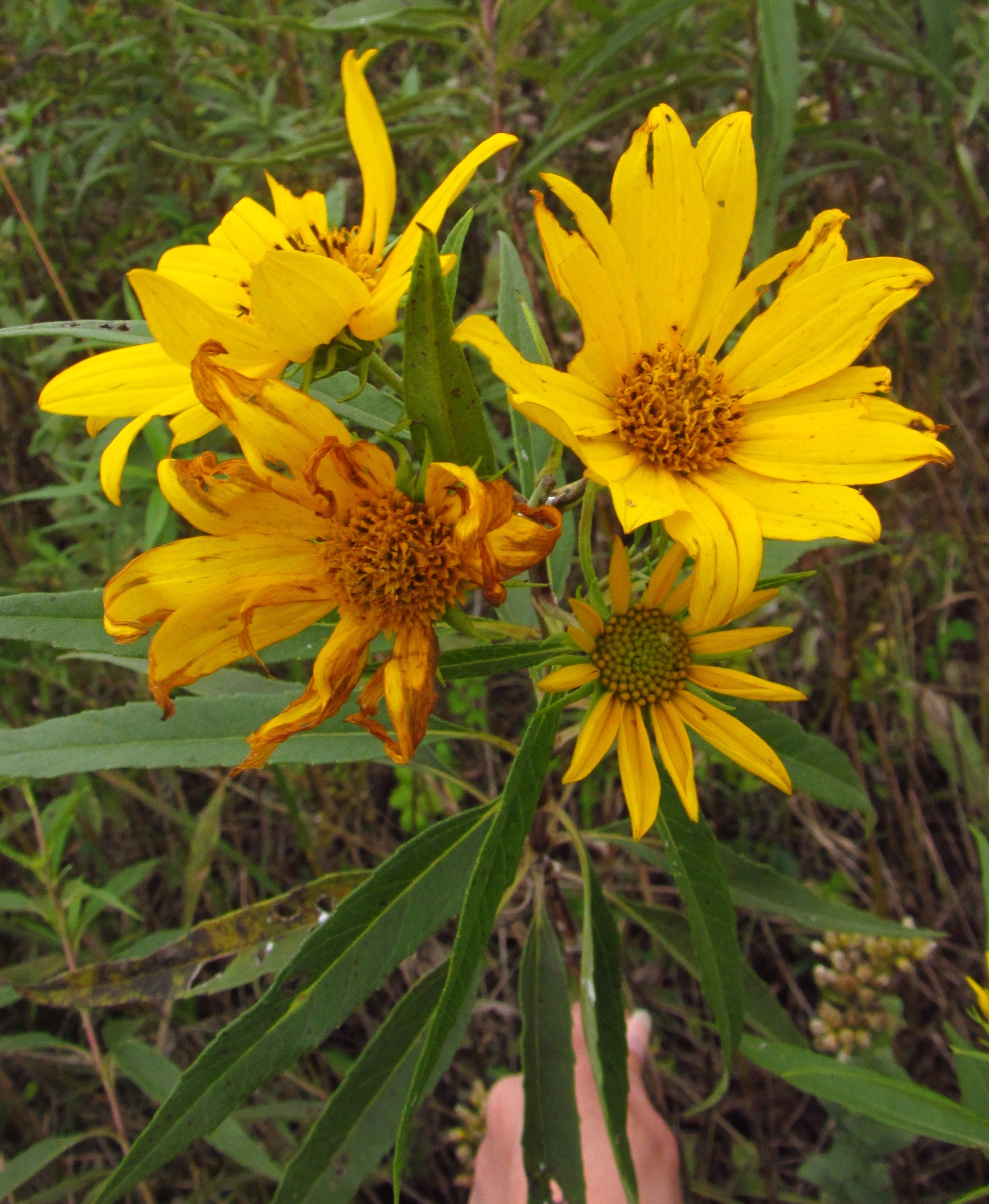
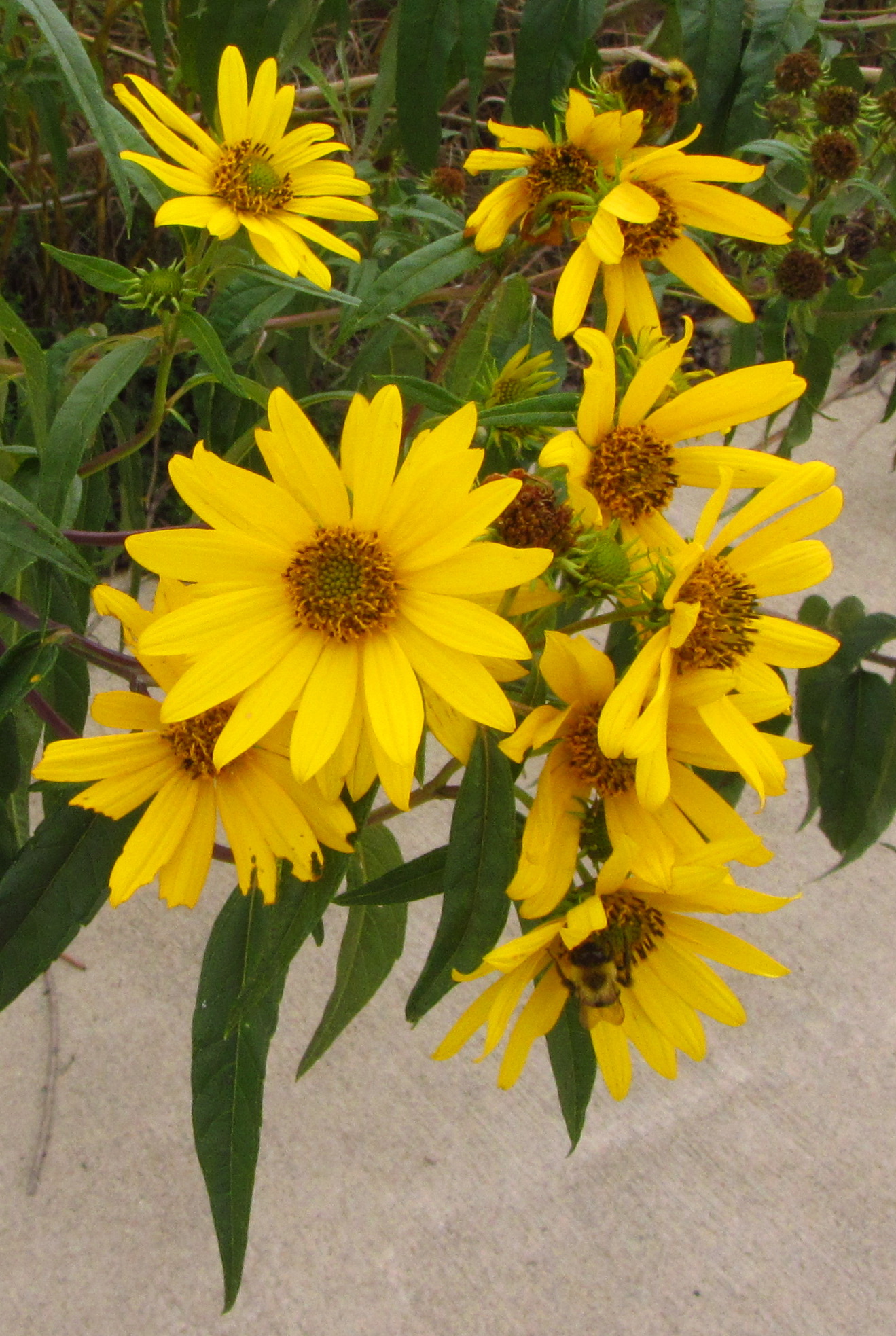
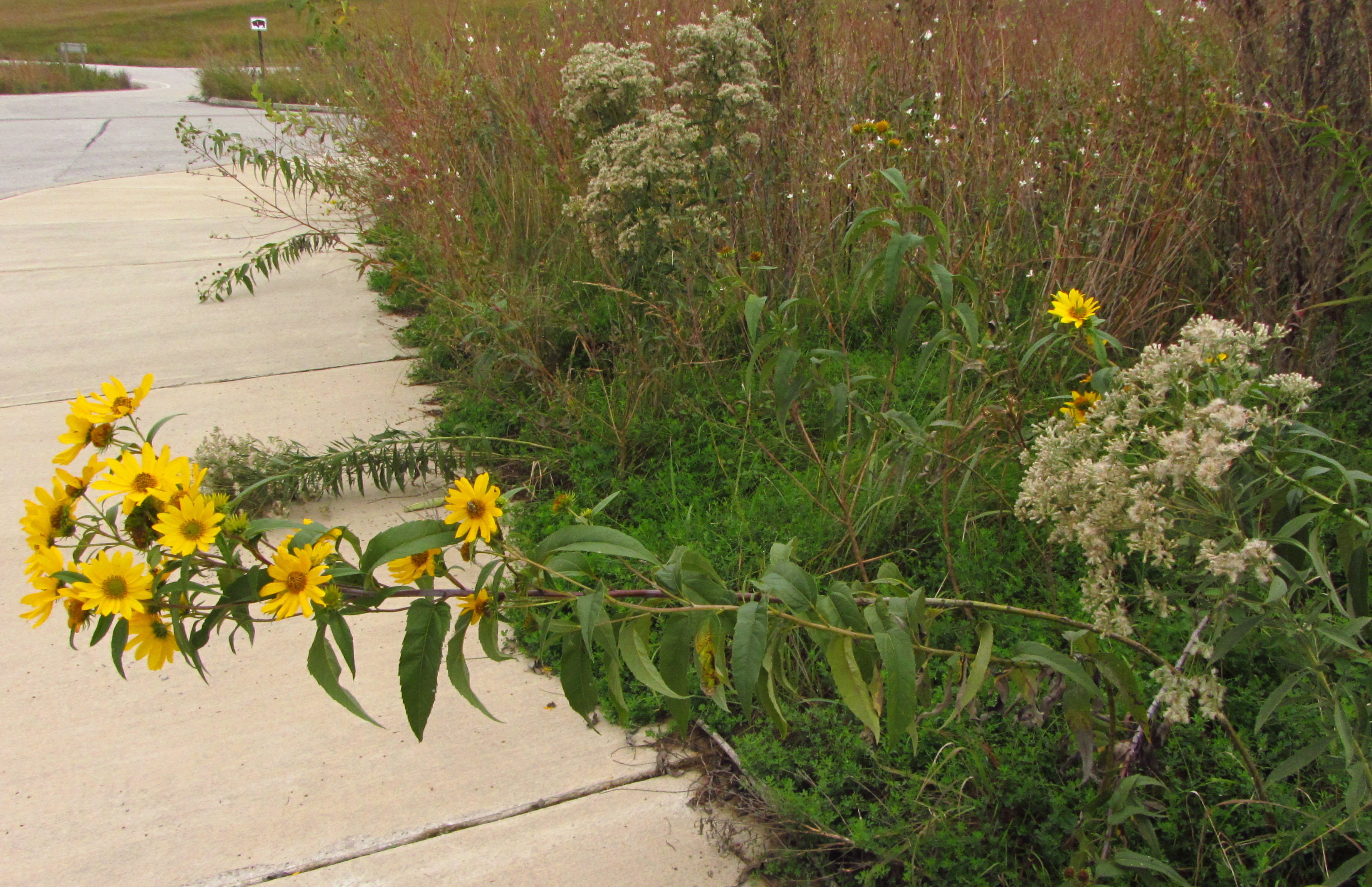
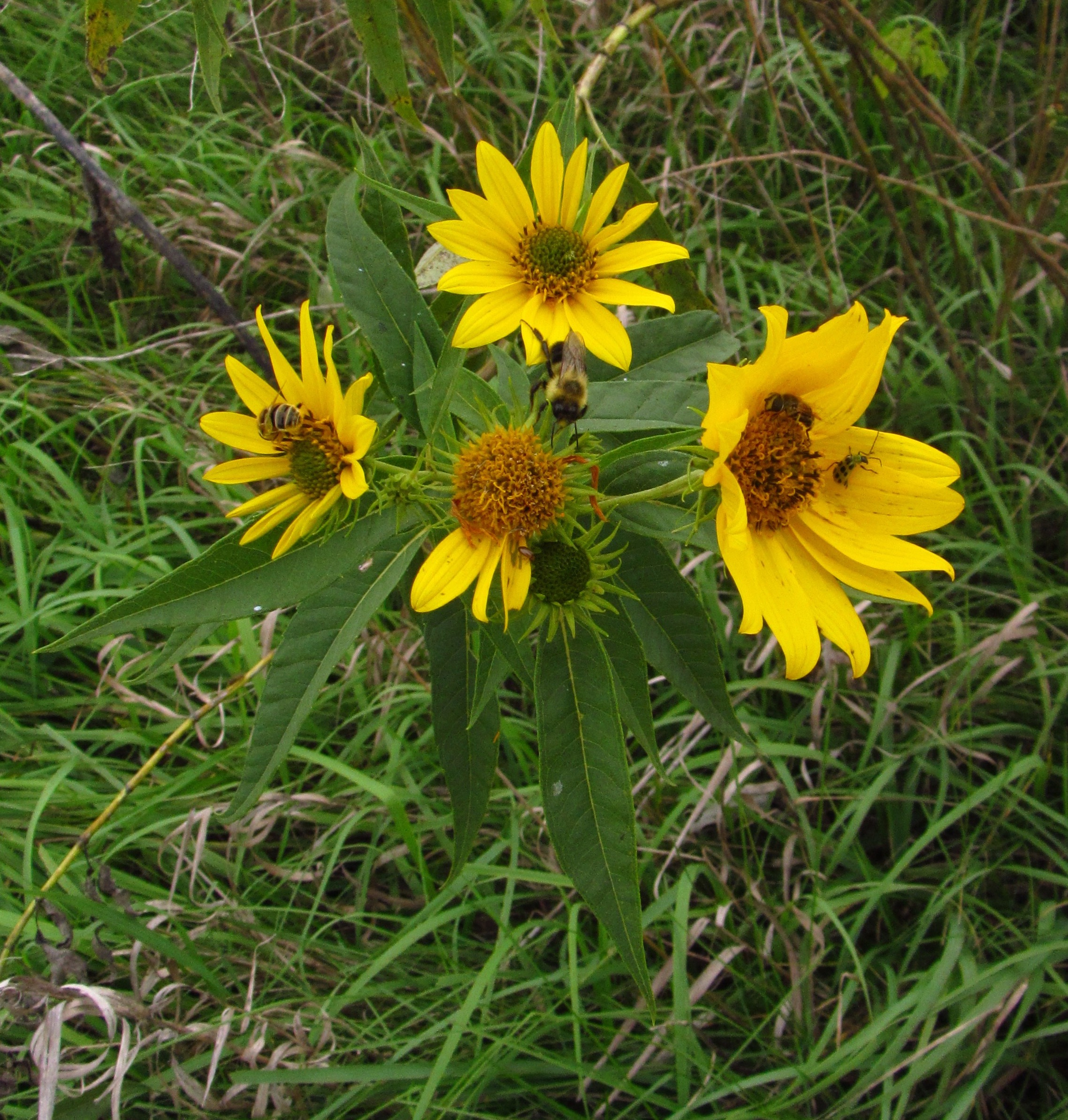
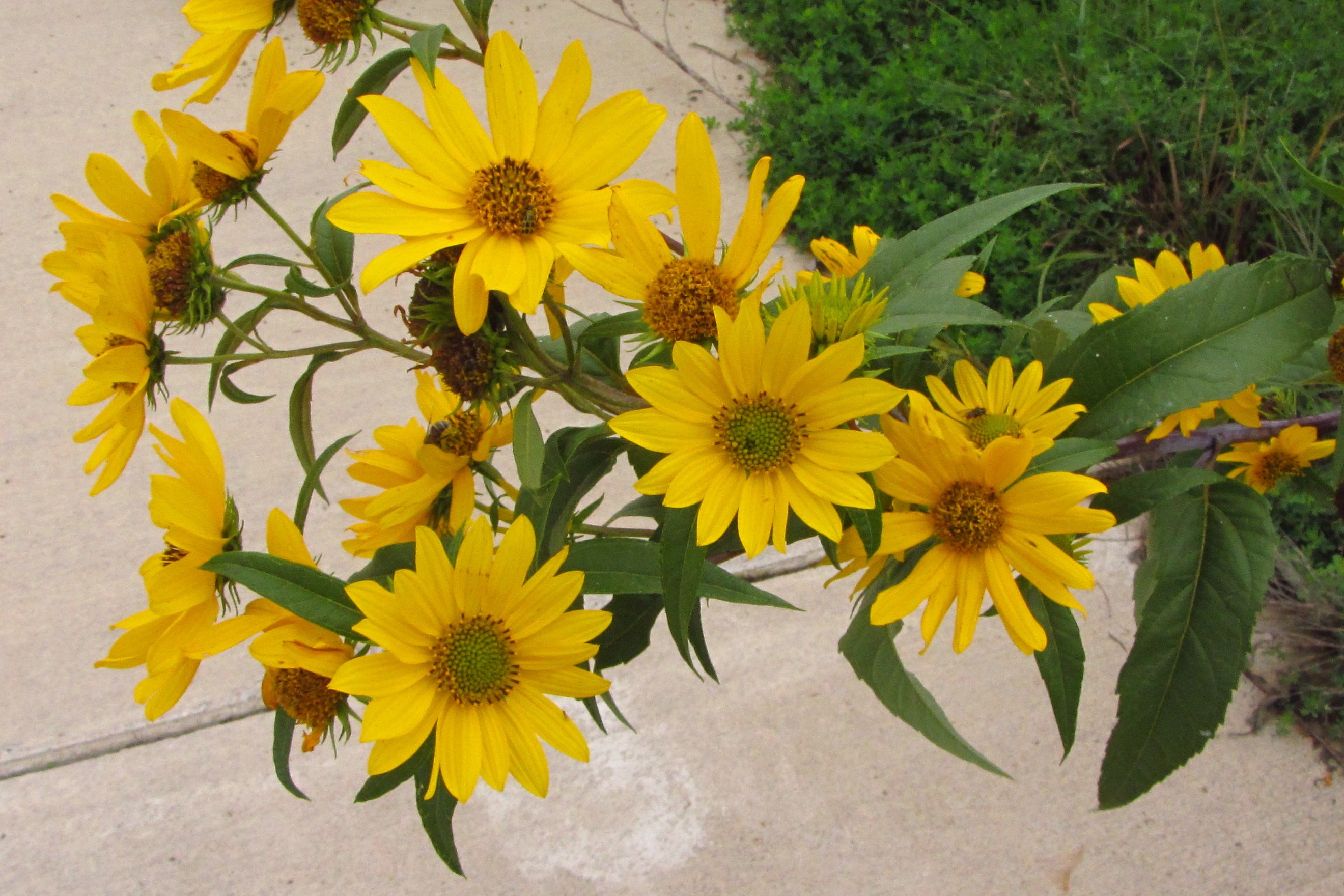
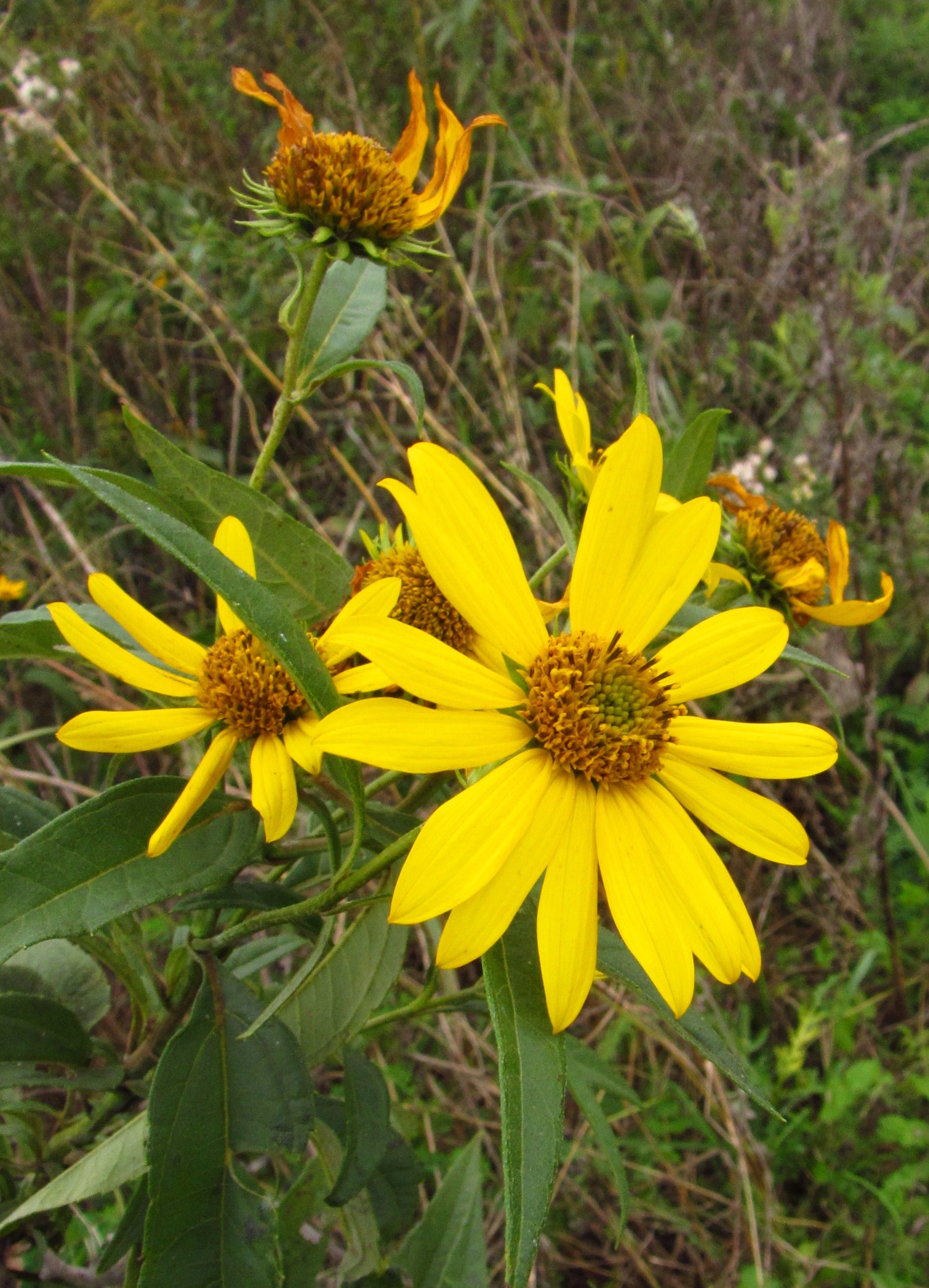
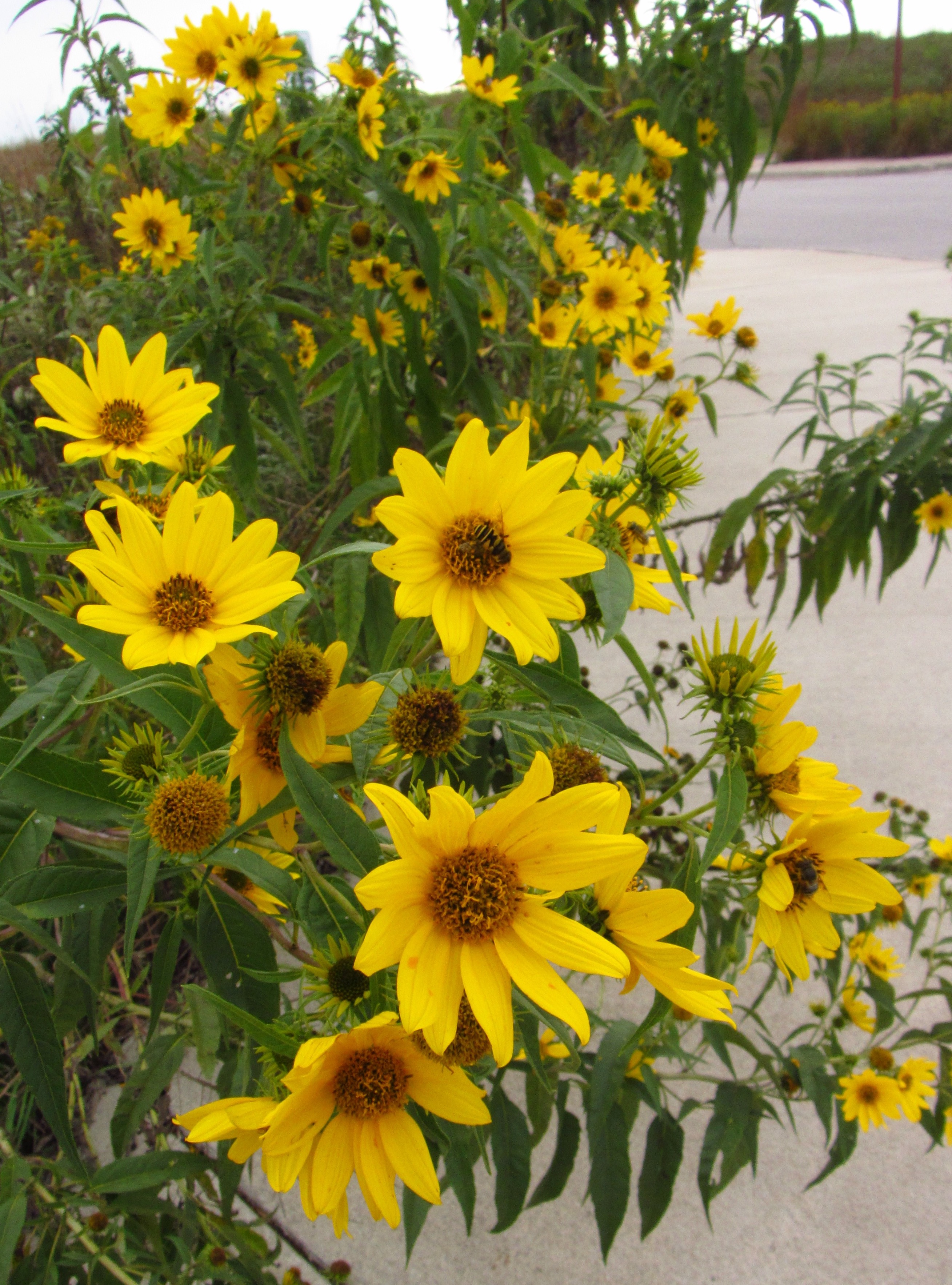
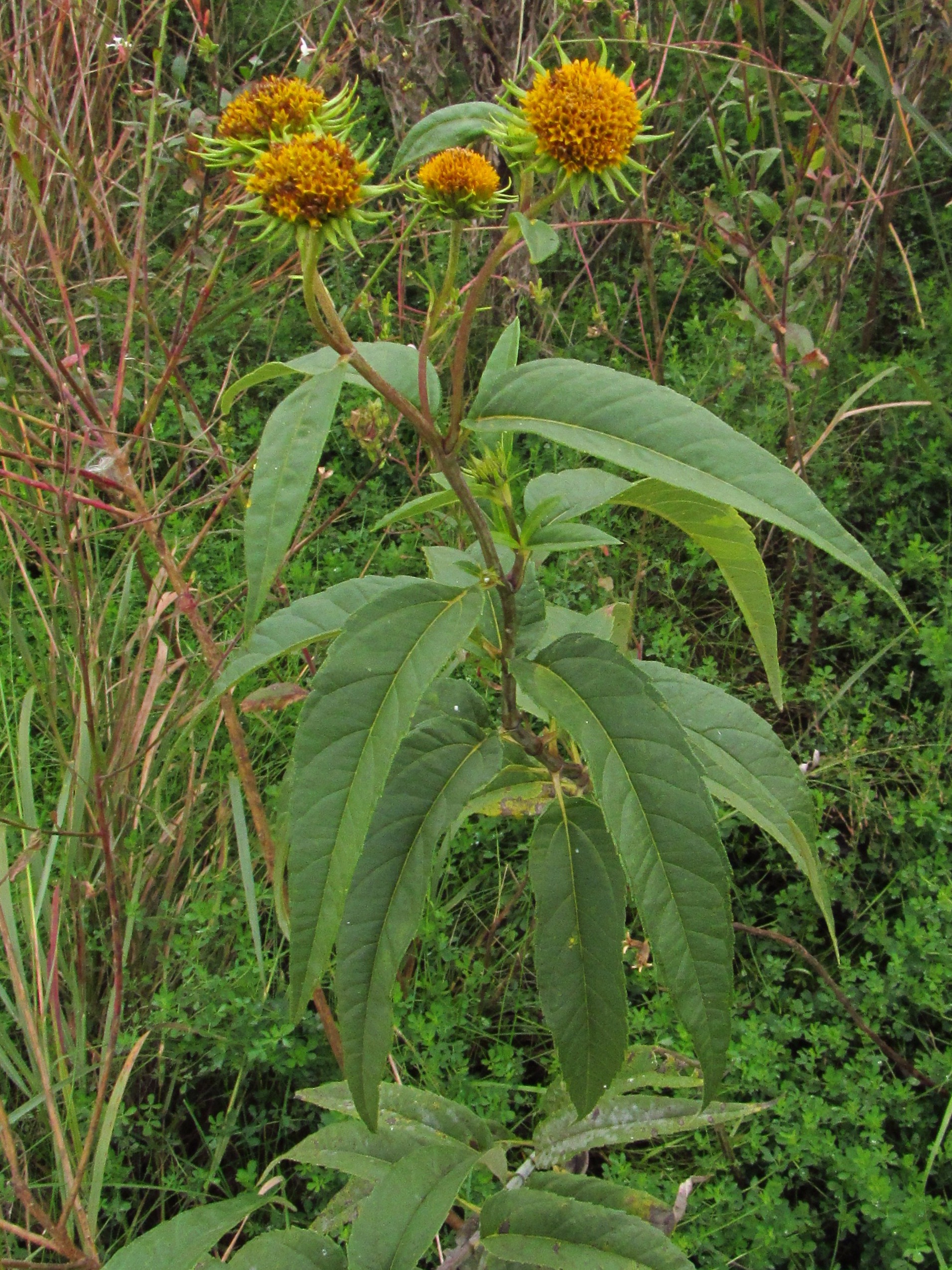
1 Comment
Sawtooth sunflowers are wonderful...
…and they are wonderful bright flowers to share with readers on a rainy day. So many kinds of insects love the flowers. And later on, more kinds of insects and various kinds of birds love the seeds. Various mammals eat the seeds and foliage,, and some insects like to feed on the leaves and stems. Sawtooth sunflowers not only feed the multitudes, but also help to keep big warm-season grasses from taking over the prairie. It’s great that Neal Smith Refuge has so many.
PrairieFan Wed 20 Nov 11:29 PM